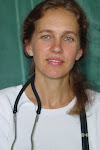I had three patients visit my office in recent months because of inconclusive results on mammograms. The results showed numerous small calcium deposits (sometimes in a particular area). The doctors’ recommendations had all been: follow up in 1/2 year.
All three of them were stressed by the fact that they have had to do repeated mammograms. One had 4 mammograms, the others 5 and 6, in the last 2-3 years and all were ordered to have another one again in just six months.
All three were concerned that numerous and frequent mammograms may cause cancer just by themselves. Also, all three of these women were living in state of constant fear that eventually a so-called “pre-cancerous” condition might turn into a cancer. Their doctors could do nothing more than “observe” and “follow up” with repeated mammograms.
All three were asking similar questions: how many mammograms they could safely undergo, and what I could do for them as a naturopathic doctor to improve breast health and stop that crazy cycle of endless mammograms.
I reviewed current research about benefits and possible side effects of mammogram. Here some interesting and important facts:
1. Mammography is the most studied method for breast cancer detection today; mammography is superior to the other imaging modalities in the depiction of tumor-associated micro-calcifications;
2. The screening age for breast cancer in Israel was 50, but they have lowered it to 45. In America it is 40. For women with family history it’s calculated individually. Source
3. The benefits and the harms in mammography screening are not given equal attention in scientific articles, which tend to emphasize the major benefits of mammography screening over its major harms. This imbalance is associated with the authors' affiliation. Source
4. I found a web-site where you can calculate the dose of radiation with each mammogram for yourself:
http://www.safety.duke.edu/radsafety/mammo_dose/default.asp
I plugged in some numbers. The median dose of a single exposure is about 171.7 millirads while the maximal dose could be as high as 473.7 millirads. The technique used, and the thickness and composition of breast tissue, are the most important factors. A thick and dense breast with a lot of glandular tissues will get maximum radiation. Thin and non-dense (with more fat tissues) breast will require less radiation.
On this web-site you may calculate how much radiation you get annually from the environment and other medical procedures.
http://www.ans.org/pi/resources/dosechart/
I put my numbers in. I got 294.75 millirads/year. Add this number to the dose from your mammogram dose.
5. The false-positive rate is lower in non-dense versus dense breasts. If a woman has thick and dense breasts the rate of false-positive results could be as high as 50%, according to some articles.
6. For Radiation Users and "members of the public" the corresponding limit of radiation is between100 millirads per year minimum to 5,000 millirads maximum. If annual dose is higher then 5,000 millirad/year in your environment, it would be classified as a hazard. During pregnancy radiation dose shall not exceed 400 millirads per year. It could cause fetal genetic disease and fetal abnormalities. http://www.mcgill.ca/ehs/radiation/manual/3/.
7. In 1977 mammography was declared a superior tool. Since then thermography is not used. Currently, however, there are more and more voices and research to revive thermography. “In light of technological advances and maturation of the thermographic industry, additional research is required to confirm the potential of this technology to provide an effective non-invasive, low risk adjunctive tool for the early detection of breast cancer.”Source
8. I have not been able to find any information about cumulative effect of radiation due to mammogram on breast cancer. It is possible that research has not been done on this topic or it will take more intense serge to find it.
Conclusion: I think mammography raises some real concerns for some women. Let’s look at this: during one mammogram a woman can receive up to 470 millirads of radiation; add to that a typical environmental dose (294) and the total is 764. That dose is higher then the allowed annual dose of radiation for a pregnant female (400millirads) per year. If 2 or even 3 mammograms were done during any given year, then the number could be as high as 1234 or even 1704. If this dose of radiation could be damaging to a fetus, could it also be damaging to breast tissues? Possibly so. Remember, reliable information about the harms of this procedure is hard to come by. Nonetheless this dose is still too small to be considered dangerous according to government standards. As you can see there is no simple answer to a question: how many mammograms are safe to have per year or through the life.
Here are my suggestions: It is prudent to do a base-line mammogram and if micro-calcifications are found then start naturopathic anti-cancer treatment with natural substances immediately. I see in my practice that improvements in breast health can be observed within six months to a year.
In my next blog I will answer in greater detail the second question: can a naturopathic doctor help if micro-calcifications are found in the breast tissues, and how? I’ll talk about anti-cancer diet, herbs and supplements that can be used safely.
Thursday, May 14, 2009
Subscribe to:
Posts (Atom)
